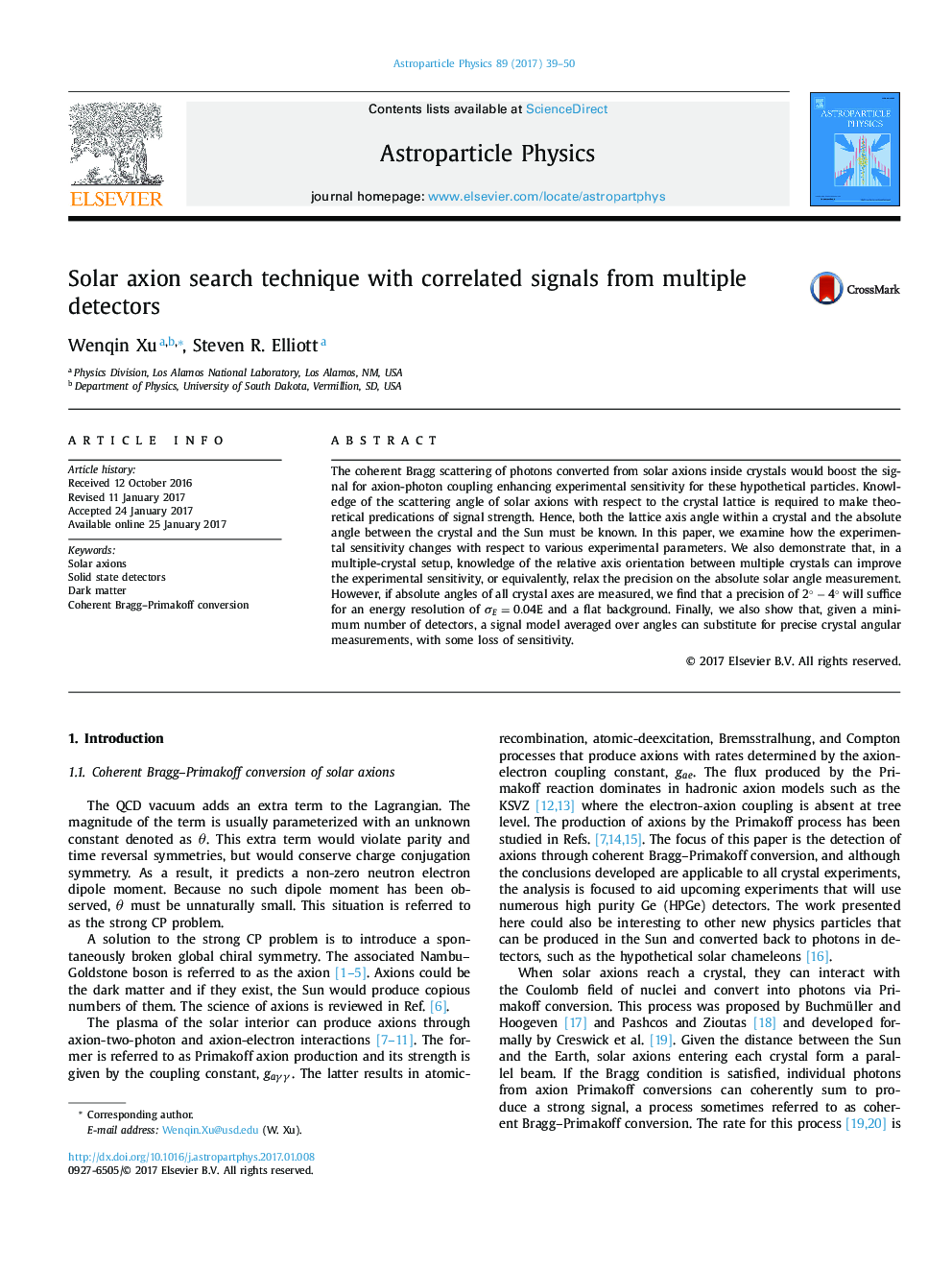| Article ID | Journal | Published Year | Pages | File Type |
|---|---|---|---|---|
| 5486754 | Astroparticle Physics | 2017 | 12 Pages |
Abstract
The coherent Bragg scattering of photons converted from solar axions inside crystals would boost the signal for axion-photon coupling enhancing experimental sensitivity for these hypothetical particles. Knowledge of the scattering angle of solar axions with respect to the crystal lattice is required to make theoretical predications of signal strength. Hence, both the lattice axis angle within a crystal and the absolute angle between the crystal and the Sun must be known. In this paper, we examine how the experimental sensitivity changes with respect to various experimental parameters. We also demonstrate that, in a multiple-crystal setup, knowledge of the relative axis orientation between multiple crystals can improve the experimental sensitivity, or equivalently, relax the precision on the absolute solar angle measurement. However, if absolute angles of all crystal axes are measured, we find that a precision of 2ââ4â will suffice for an energy resolution of ÏE=0.04E and a flat background. Finally, we also show that, given a minimum number of detectors, a signal model averaged over angles can substitute for precise crystal angular measurements, with some loss of sensitivity.
Related Topics
Physical Sciences and Engineering
Physics and Astronomy
Astronomy and Astrophysics
Authors
Wenqin Xu, Steven R. Elliott,
